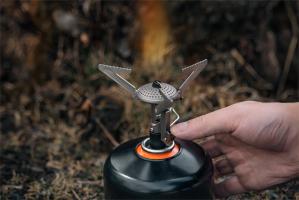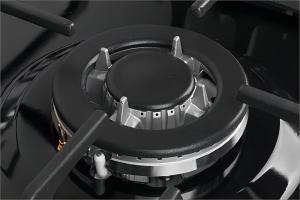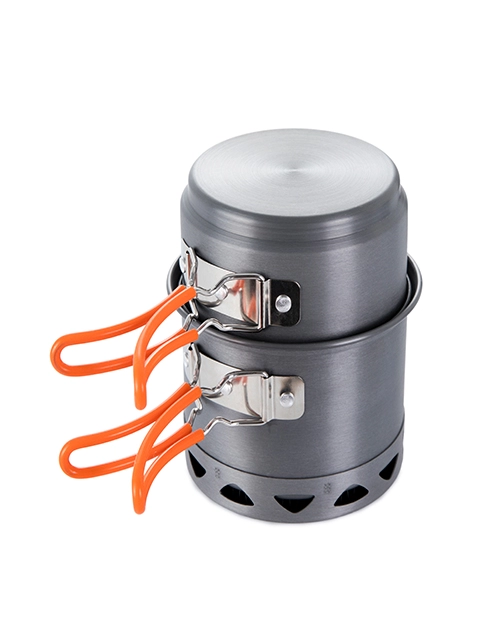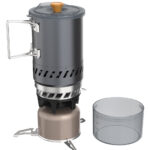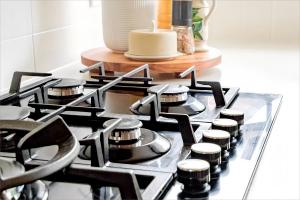
Before the invention of gas stoves, people relied on coal or wood for cooking. These were inconvenient and time-consuming. Gas burners eliminated the everyday trouble of solid fuel and gradually became a regular component in homes. Nowadays, the market offers a wide range of gas burner alternatives that can easily manage smaller or larger cooking volumes. However, the core characteristics of our old kitchen friend remain unchanged. In this post, we will look at how a gas stove works.
Is A Gas Stove Safe to Use?
You may use your gas stove regularly, but how often have you attempted to discover how it works? Although gas burners are pretty safe, they operate on flammable fuel. As a result, gas stoves do pose certain dangers.
Lighting the burner might be intimidating for both novices and first-timers. Knowing how your gas stove works will help you prevent mishaps in the kitchen. Plus, it’s always fun to learn new things, isn’t it?
How Does a Gas Stove Work?
The operation of gas stoves is determined by the models and technologies used. Regarding ignition, modern gas stoves come in two varieties: standing pilot and electronic ignition.
Standing Pilot Ignition
This device allows gas stoves to roar to life at the turn of a knob. A pilot light (constantly burning gas flame) is used between the front and back burners in such stoves. A gas stove burner consists of a burner assembly connected to a gas valve. The system is connected to the main gas line via this valve. The valve now opens when you turn the knob. This permits the gas to pass via the venturi tube, which is a conduit with broad ends and a narrow midsection. The pressure of the gas flow rises due to the limited area of the venturi tube.
Where the venturi tube widens again, there is a little air hole. When the gas flows towards the broader area and relieves the pressure, this air hole sucks in the oxygen. The oxygen is combined with the gas and converted into a combustible fuel before entering the burner. Gas stove burners are composed of metal and are hollow on the inside, with tiny holes around the circumference. The gasoline is pumped through these apertures. When a flame source is placed on one side of the burner, it ignites the oxygen gas combination. The flame may be adjusted by twisting the knobs up and down.
Electronic Ignition
While the processes are the same, with gas stoves with electronic ignition, electricity ignites the burners. Simply spin the knob until it clicks, and your burners will light up. The knob in electronic ignition not only regulates the gas flow but also transmits a little electric spark to turn on the flame.
Gas stoves are more energy efficient than electric cookers but less efficient than induction burners. According to studies, fuel reaches the gas burner three times faster than electricity does for electronic cookers. Gas stoves also heat considerably faster than electric stoves. As a result, they cook faster and use less energy. In terms of cost-efficiency, a gas stove can actually save you more money over time than a sophisticated electronic stove.
Are Gas Stoves Efficient?
One of the most significant advantages of a gas stove is its great efficiency – some of our stoves have energy efficiency ratings of more than 80%! Because they do not suck in unnecessary air, energy is not squandered, allowing more to be created to heat your space. Their purity also ensures that a buildup of soot or residue will not alter how your fire burns. It is also better for the environment because it does not emit nasty smoke into the atmosphere, so you won’t have to worry about sweeping your chimney!
Why Buy a Gas Stove?
Gas stoves provide a variety of advantages that may make them appropriate for your house.
- Clean:A gas stove requires little maintenance or cleaning and emits no smoke or particles.
- Cosy and warm:Gas stoves provide a lot of heat and have the same ambience as a wood fire.
- Authentic looking:With realistic-looking fake logs or coal and cast-iron exteriors, gas stoves may look just like the genuine thing.
- Quick and easy:You can ignite it with a button and regulate the temperature without looking for fuel.
Are Gas Stoves Safe?
Some people may have concerns about fuels being emitted by burning gas. However, modern day fireplaces are incredibly safe and deposit gases outside, through your chimney or flue. Flueless gas stoves are incredibly reliable and all the air released back into your home will be clean and harmless.
If your gas stove was fitted by a registered Gas Safe fitter, you have it inspected annually and you have a carbon monoxide alarm in your home, your gas stove should be perfectly safe. Carbon monoxide is produced by the incomplete burning of natural gas, which can be caused by a badly fitted or unmaintained gas appliance.
A gas stove is also one of the greatest solutions for a fireplace for people who have children and pets. There will be no embers or bare flames to worry about, and you won’t have to have any sharp equipment to stoke wood, which may cause an accident with curious children.
Conclusion
Many cooks choose gas stoves because they allow fast and exact control over the cooking temperature. However, because natural gas and propane are combustible and can be deadly if not handled properly, it is critical to utilize them cautiously and to ensure that there are no gas leaks. If you suspect a gas leak, switch off the gas supply immediately and contact your gas utility company or a professional expert to examine and remedy the problem.
ODM service
Looking for reliable camping stove supplier? At Deermaple, we specialize in ODM service, offering high-quality and innovative stoves tailored to your needs.
If you are interested in camping stove wholesale , please contact us.


